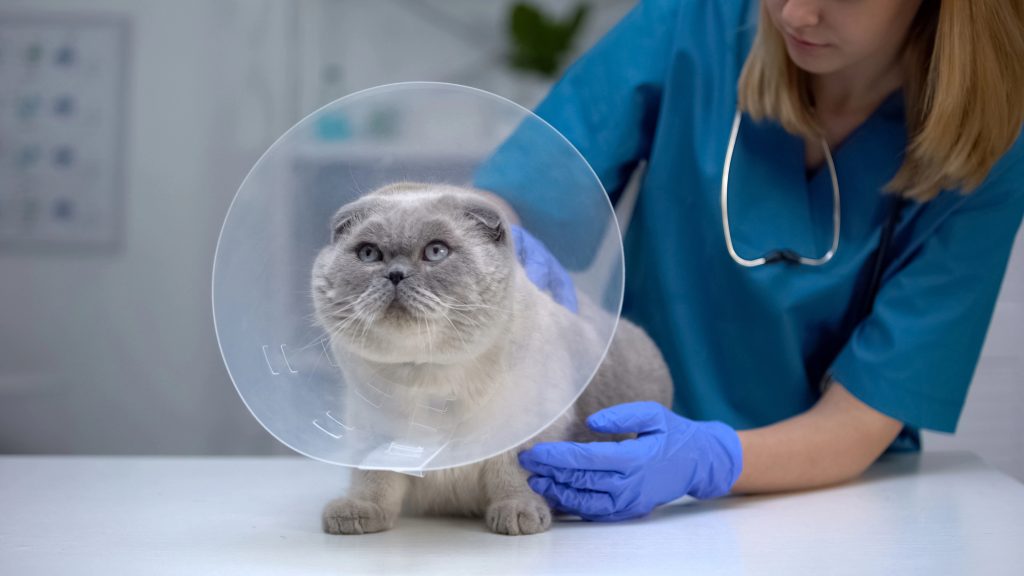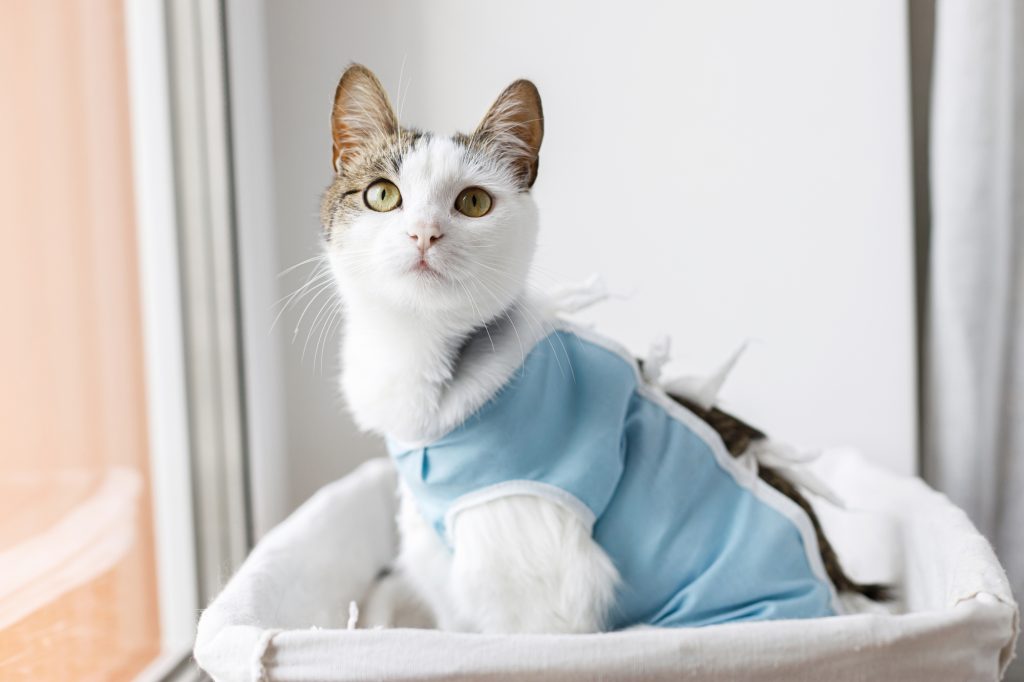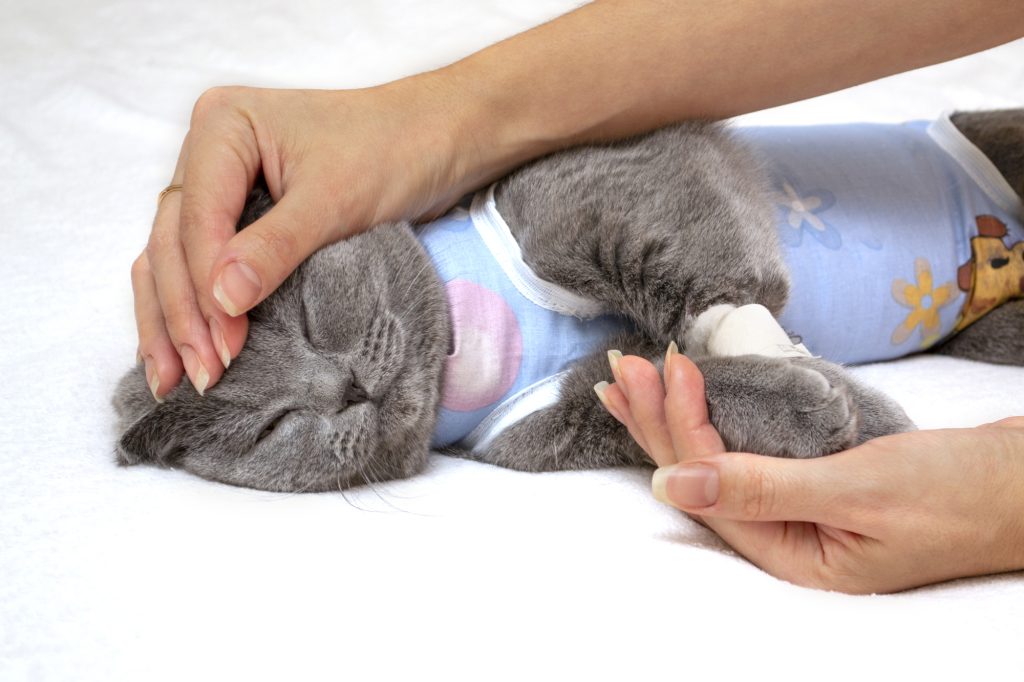Table of Contents
Spaying your cat is a responsible decision that prevents unwanted litter and contributes to your pet’s health. But many cat owners wonder if they can spay a cat in heat. While the procedure can be performed at this time, it’s important to understand that the risks of spaying a cat increase due to the enlarged blood vessels and increased blood flow to the reproductive organs that accompany a cat’s heat. Consulting with a veterinarian can help minimize the risks and ensure the health and happiness of your cat.
Spaying a cat in heat is more complex than when the cat is not in heat, as the surgical procedure involves additional care to manage the greater risk of complications. However, it remains a viable option, especially if delaying the surgery until after the breeding season ends is not preferred. Although spaying a cat during her heat can be riskier, with the right preparation and post-operative care, cats can be spayed safely to avoid the heat cycle’s challenges.
Understanding the Heat Cycle in Cats
The heat cycle in cats is a hormonal cycle that prepares them for breeding. During this time, a female cat can vary greatly in behavior, often becoming more affectionate and rubbing against objects more frequently. These behavioral changes signal that the cat is ready to mate and can occur multiple times a year, as cats are polyestrous, meaning they can go into heat several times in a breeding season.
Understanding these cycles is crucial for cat owners, as it influences the timing of spaying your cat. While cats can be spayed at any stage, the ideal time is typically before the first heat cycle to reduce health issues linked to reproductive hormones. However, if a cat is in heat, the owner must be aware of the specific considerations this condition entails for the surgical process.
Recognizing Signs Your Cat Is in Heat
When a cat is in heat, she displays distinct signs that indicate her readiness to mate. One of the most noticeable is increased vocalization, where she may yowl and meow more than usual, sometimes in a tone that can be distressing to hear. This behavior is a natural part of her breeding cycle and is meant to attract males.
In addition to vocal changes, a cat in heat will often exhibit restlessness, seek more attention than usual, and may show an increased desire to escape outdoors, where she can find a mate. Recognizing these behaviors is essential for cat owners to provide the right care and consider the timing for spaying.
Duration of the Feline Estrous Cycle
The length of the feline estrous cycle for cats in heat can vary but typically lasts about a week. Spaying cats during this time reduces the risk of developing certain health problems, like uterine infections, and can prevent the greater risk of complications associated with repeated heat cycles. Increased blood flow to the reproductive organs during heat can make the surgical procedure slightly more challenging, but it’s a manageable condition for skilled veterinarians.
The Frequency of Heat Cycles in Cats
Cats are polyestrous creatures, which means they experience multiple heat cycles throughout the breeding season. These cycles can happen as frequently as every two to three weeks, making it challenging for pet owners who wish to prevent their cats from breeding. During heat, a cat may exhibit behaviors such as rubbing against objects to spread her scent and signal her receptiveness to males.

The Ideal Time for Spaying Your Cat
Spaying your cat at the right time is important for her health. The ideal time is before her first heat cycle, which can occur as early as four to six months of age. This timing helps prevent the onset of any unwanted behaviors associated with the heat cycle and reduces the risk of certain cancers.
If your cat has already entered her heat cycle, you may opt to wait until the heat has passed before scheduling the spay surgery. This reduces the surgical risks and can make for a more straightforward procedure and recovery. However, if you cannot wait, spaying your cat during her heat is still possible with extra veterinary care.
Ultimately, the decision to spay your cat should be made in consultation with a veterinarian, who can advise on the best timing and approach based on your cat’s health and circumstances. They can also provide insights on the spaying procedure and what to expect, whether your cat is in heat or not.
Spaying Procedure Insights
Understanding the spaying procedure is essential for any cat owner considering the surgery for their pet. It’s a common operation that can greatly benefit your cat’s overall well-being.
The Surgical Process of Spaying a Cat
Spaying your cat involves a surgical procedure where the ovaries are removed, and often the uterus as well, which eliminates the possibility of your cat becoming pregnant. The surgery is done under general anesthesia, and while it is routine, it requires a skilled veterinarian to ensure the safety and health of your pet.
The process typically involves a small incision in the cat’s abdomen through which the reproductive organs are surgically removed. It’s a quick procedure, but it requires careful attention to detail to ensure that all of the ovarian tissue is removed, as remnants of ovarian tissue can cause continued hormonal cycles.
Pre-Surgical Preparations for Your Cat’s Comfort
Preparing your cat for surgery is an important step to ensure her comfort and reduce stress. This includes fasting before the procedure, as recommended by the veterinarian, and providing a quiet, calm space for her to rest in. Proper preparation helps ensure a smoother surgery and recovery process.
Post-Operative Care and Home Recovery Tips
After the spaying surgery, your cat’s health should be monitored closely as she recovers. This typically includes managing pain with medication, preventing her from licking the incision site, potentially by wearing a cone and providing a comfortable resting area. Following your veterinarian’s guidance on post-operative care is vital for a healthy recovery.
Safety and Risks of Spaying a Cat in Heat
While spaying a cat in heat is generally safe, it’s important to be aware of the increased risks. The surgical procedure can be more complex due to the engorged blood vessels and tissue, which may lead to more bleeding. Your veterinarian can assess the specific risk to your cat and take extra precautions to ensure her safety.
Evaluating the Increased Risks During Heat
The surgical procedure for spaying cats who are in heat carries an increased risk due to the engorged blood vessels and the heightened sensitivity of the reproductive organs. This can lead to more significant bleeding and requires a more cautious surgical approach. Veterinarians are trained to manage these risks, but it’s important for pet owners to be aware of them.
Despite the increased risks, many veterinarians are experienced in performing spay surgeries during heat and can do so successfully. It’s essential to discuss these risks with your vet and to understand how they will be managed during and after the procedure.
Stress Mitigation Strategies for Spaying During Heat
When a cat is spayed while in heat, managing stress is crucial for both the cat and the owner. Vets may recommend specific strategies to keep the cat calm before and after the procedure, such as providing a quiet environment and administering appropriate pain relief to ensure the cat’s comfort.
Additionally, clear communication between the vet and the pet owner about what to expect can help in preparing for the surgery and the recovery period. This can make the experience less stressful for everyone involved and can contribute to a smoother recovery for the cat.

Spaying and Feline Health Benefits
Spaying offers numerous health benefits for cats, including a reduced risk of mammary gland tumors, uterine infections, and ovarian cancer. It also eliminates the possibility of unwanted kittens, which can help reduce the number of homeless cats. Moreover, it may decrease behaviors such as urine marking and aggression associated with the reproductive instinct.
By preventing the heat cycle, spaying can also lead to a more peaceful home environment, as cats in heat can display disruptive behaviors such as loud vocalizations and restlessness. These benefits extend to improving your cat’s quality of life and can lead to a longer, healthier relationship with your pet.
Overall, spaying is a proactive step in ensuring your cat’s well-being. It’s a decision that should be discussed with your veterinarian to determine the most appropriate timing and to understand the full scope of benefits for your cat’s specific health needs. By choosing to spay, you’re investing in your cat’s long-term health and happiness.
Financial Aspects of Spaying
For pet owners considering the ideal time to spay their feline friends, understanding the financial aspects is crucial. The cost of spaying a cat can vary widely depending on the region, veterinary clinic, and whether the cat is in heat. Generally, spaying costs can range from $50 to $200, with some low-cost clinics offering subsidized rates. It’s worth noting that spaying a cat in heat might incur additional charges due to the increased surgical complexity and time required.
Moreover, investing in spaying can lead to long-term financial savings by preventing health complications associated with reproductive diseases and the expenses of caring for a litter of kittens. Many animal shelters and rescue organizations also offer vouchers or discounts for spaying, which can help alleviate some of the financial burden for cat owners.

Frequently Asked Questions
1. How can you tell if a female cat has been spayed?
For those curious about whether their feline has undergone the procedure, there are a few signs that indicate cats can be spayed. A shaved area near the abdomen is a common indicator, as this is where the incision is typically made. Over time, a faint scar may also be visible. Additionally, many veterinarians implant a small tattoo near the incision site to signify that the cat has been spayed, which can be a clear marker for spayed cats.
If these physical signs are not apparent, a veterinarian can perform an examination or use diagnostic imaging to check for the presence of a spay scar or absence of reproductive organs. Pet owners need to have this information, as it affects the health care and behavioral expectations for their cats.
2. What happens if a spayed cat gets pregnant?
Understanding the spaying procedure helps clarify this question: during spaying, a cat’s reproductive organs are completely removed, making pregnancy impossible. Therefore, if a pet owner suspects that their spayed cat is pregnant, it’s likely a case of mistaken symptoms or a misunderstanding of the cat’s surgical history. Animal shelters and rescue groups often ensure cats should be spayed before adoption to prevent any chance of pregnancy.
In rare instances, symptoms of pregnancy may be due to an incomplete spaying procedure where remnants of ovarian tissue are left behind. This condition, known as ovarian remnant syndrome, can lead to signs of heat or pseudo-pregnancy, but actual pregnancy cannot occur. A veterinary exam can determine the cause of the symptoms and address any necessary medical intervention.
3. Do spayed cats still mate?
Spayed cats typically lose their drive to mate because the spaying procedure involves the removal of their ovaries, which are the source of the hormones that trigger mating behavior. However, in cases where there is an ovarian remnant, cats might continue to display mating behaviors. This condition occurs when a small piece of ovarian tissue remains active in the body after surgery, producing hormones.
If a cat exhibits signs of mating after being spayed, a veterinarian can perform diagnostic tests to determine if an ovarian remnant is present. If confirmed, additional surgery may be required to remove the remaining tissue and alleviate the mating behaviors, restoring the cat to a non-reproductive hormonal state.
4. How can I get my cat out of heat fast?
When a cat enters her heat cycle, it can be a challenging time for both the pet and owner. The only definitive way to end a cat’s heat cycle is through a spaying procedure. If a pet owner decides to spay a cat in heat, they should be aware that the surgery is more complex due to enlarged blood vessels and tissue changes, which present additional risks of spaying a cat. It is crucial to minimize the risks by choosing a skilled veterinarian and following all pre and post-operative care instructions.
Spaying a cat in heat involves surgically removing the ovaries and usually the uterus, halting the hormonal cycle that causes heat. Once the cat is spayed, the heat will not recur, preventing unwanted litters and the associated costs and care responsibilities. If a cat is pregnant, spaying can still be performed, but with extra care. Following surgery, the cat may need to wear a cone to prevent licking the incision site, and the owner should monitor closely for any signs of distress or complications.
Concluding Thoughts
Deciding to spay a cat in heat is a significant decision in pet ownership, and it should be made with a comprehensive understanding of both the procedure and its implications. It’s essential to weigh the benefits of spaying, such as preventing unwanted litter and reducing the risk of certain health issues, against the potential risks, especially those heightened during the heat cycle. As responsible pet owners, we aim to provide the best care for our feline companions, ensuring they lead happy, healthy lives.
Ultimately, the timing and decision to spay are personal choices that should be discussed with a veterinarian who understands your cat’s health and circumstances. By being well-informed and prepared, pet owners can make a choice that aligns with the well-being of their beloved cat and contributes to a long-term, positive impact on their pet’s health and the community’s pet population as a whole.

Hi, I’m Zoey, a devoted mom to two charming Siamese cats. My passion lies in assisting fellow pet owners in providing optimal care for their cats. On CatsEuphoria, I share practical tips and relatable stories, inviting you to join me in appreciating the authentic bond between humans and our beloved feline companions.




